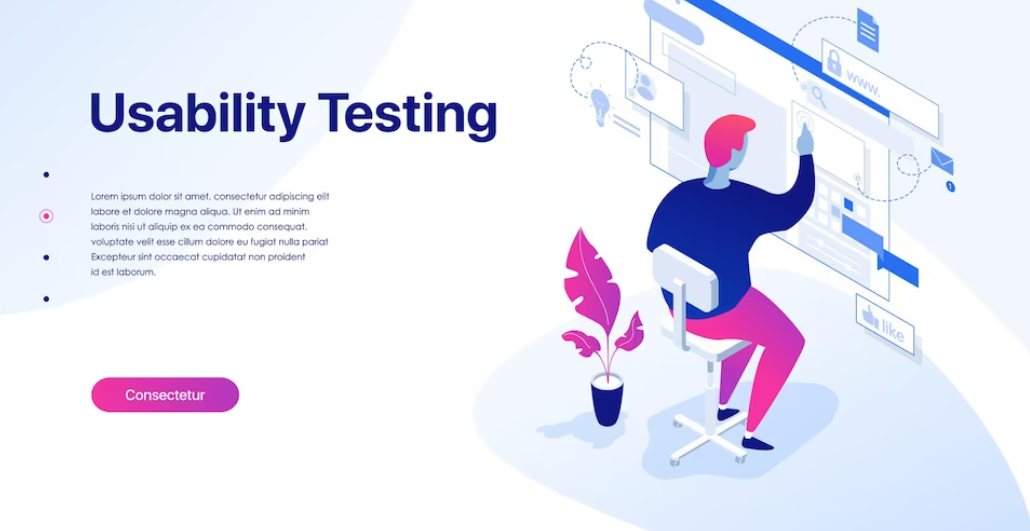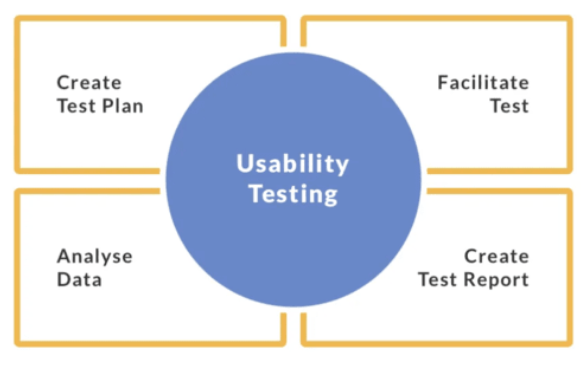Understanding the Importance of Usability Testing
In order to help companies build goods and services that satisfy the requirements and expectations of their customers, usability testing is a crucial step in the design and development process. Usability testing gives useful information about areas that require improvement by watching and evaluating how users interact with a website or application. It’s essential to have the correct tools in order to perform usability testing efficiently.
The Best Tools for Usability Testing
The best tools for usability testing are those that put the user experience first and offer deep insights into user behavior. Researchers can assess a product or website’s usability by using these tools to watch how users interact with it and pinpoint any problems or potential areas for improvement. UsabilityHub, Optimal Workshop, and UserTesting are a few of the best tools for usability testing.
Importance of Having Access to the Greatest Resources
The greatest resources must be at your disposal when it comes to usability testing in order to collect precise and insightful data. By enabling researchers to watch and examine how users interact with a product or website, these tools are meant to make it easier to evaluate the user experience. These tools offer comprehensive insights into user behavior and assist in pinpointing areas that require improvement through the use of sophisticated features like heatmaps, click tracking, and screen recording.
Enhancing Usability Testing Efficacy with Proper Tools
Having access to the appropriate tools can significantly improve the efficacy of usability testing, which is a crucial step in the design process. The most effective tools for usability testing are those that have a variety of features to record user behavior and deliver useful information. These tools allow researchers to record user sessions, analyze user interactions in real time, and conduct in-person or remote testing. These tools help researchers and designers understand how users interact with their products better and help them make decisions that will increase usability. Let’s examine a few of the top usability testing instruments currently on the market.

1. UserTesting
With the help of the well-known usability testing platform, UserTesting, companies can get input from actual users. It provides many different testing options, such as unmoderated, moderated, and remote testing. Businesses using UserTesting can generate unique tasks and scenarios for testing, as well as obtain comprehensive video recordings of user interactions. In order to assist businesses in identifying areas for improvement, the platform also offers useful metrics and analytics.
Real-time and automated user testing are provided by the user research platform UserTesting. Businesses can test their products on a wide range of users and gather feedback on different aspects of the product, including design, usability, and the overall user experience. In order to assist businesses in visualizing and analyzing user behavior, the platform also offers heatmaps and analytics driven by AI. To meet the needs of companies of all sizes, UserTesting provides flexible pricing options.
2. Optimal Workshop
Businesses can enhance the user experience of their digital products by utilizing a suite of usability testing tools called Optimal Workshop. It provides resources to carry out first-click testing, tree testing, and card sorting exercises. These tools offer insightful information about how people use websites and applications’ information architecture to navigate and make decisions. To assist companies in making data-driven design decisions, Optimal Workshop also provides robust analytics and reporting tools.
Card sorting, tree testing, and usability testing are among the user research tools available in Optimal Workshop. In order to evaluate the efficacy of design elements like buttons, menus, and links, it also provides a tool called Chalkmark that mimics user interaction with prototypes. Multiple team members can work on the same project with Optimal Workshop’s collaborative platform, which streamlines and improves the testing process.
3. UsabilityHub
A range of usability testing tools are available on the user research platform, UsabilityHub. One of its most well-liked tools is the Five Second Test, which enables companies to evaluate the readability and efficacy of the visual design of their website or application. Tools for conducting click tests, preference tests, and navigation tests are also available on UsabilityHub. UsabilityHub is a fantastic option for companies trying to get fast and useful feedback because of its user-friendly interface and short response time.
Businesses can get user feedback on their designs and prototypes by using UsabilityHub, a well-known platform for user testing. Tests of different kinds are available, such as preference tests, navigation tests, and first-click and five-second tests. In order to help businesses better understand user behavior and adjust their designs, the platform also offers click maps, heatmaps, and visual
feedback. Businesses can use UsabilityHub to target particular demographics and get feedback from their intended audience.
4. Hotjar
A variety of usability testing features are available in Hotjar, an all-inclusive user analytics and feedback tool. To assist businesses in understanding how users interact with their website or application, it offers heatmaps, session recordings, and feedback polls. Additionally, businesses can recruit and test real users with Hotjar’s user testing feature. Hotjar is a useful tool for companies trying to improve their user experience because of its insightful data and simple-to-use interface.
5. Maze
Prototypes and designs are the main focus of the user testing platform Maze. It easily combines with well-known design programs like Sketch and Figma, enabling companies to test their designs right from these programs. Maze helps businesses get insightful feedback on their designs with features like preference tests, click tests, and navigation tests. Maze’s collaborative features and comprehensive analytics make it an excellent option for design teams seeking to refine and enhance their designs in response to user feedback.
Whether it’s software, a mobile application, or a website, usability testing is a crucial part of the design and development process. During this process, actual users test the product to gauge its usability, effectiveness, and ease of use. The need for efficient usability testing tools has grown along with the quickly expanding digital landscape. This post will go over some of the top usability testing resources that companies can use to enhance their offerings and give customers a smooth experience.
6. Lookback
Lookback is a platform for user research that provides remote testing of usability. Businesses are able to record user sessions and obtain user feedback in real-time. In order to promote cooperation between researchers and designers, the platform also offers features like screen sharing, note-taking, and time-stamping. Because of its adaptable pricing structures, Lookback is a desirable choice for companies of all sizes.
7. UserFeel
With the help of the remote user testing platform UserFeel, companies can obtain in-depth video recordings of customers interacting with their products. The platform provides a variety of test formats, including both unmoderated and moderated options. Businesses can easily obtain feedback from a wide range of users thanks to UserFeel’s global pool of testers. Businesses with a global clientele can benefit from the platform’s multilingual testing feature.
8. TryMyUI
Using its user testing platform, TryMyUI, companies can get actual user feedback on their mobile apps, prototypes, and websites. It provides sophisticated functions like mobile testing, facial expression analysis, and eye tracking. By selecting particular demographics to test, TryMyUI also enables businesses to obtain feedback from their target audience.

The Importance of Usability Testing Tools for Businesses
To make sure that their products are user-friendly and fit the needs of their target market, businesses must conduct usability testing. Before releasing their products, companies can find and address any usability problems thanks to the useful insights provided by the usability testing tools previously mentioned. Each tool offers a different set of features to help businesses improve their products and provide a seamless user experience, whether it’s recording user sessions or analyzing heatmaps. So, take into account these top usability testing tools for your upcoming project and observe how they will improve the success of your product.
Optimal use of usability testing tools
In order to create user-centered designs and enhance the user experience overall, usability testing is an essential step. Utilizing appropriate usability testing instruments enables companies to obtain insightful data and make wise design choices. Of the numerous usability testing tools on the market, UserTesting, Optimal Workshop, UsabilityHub, Hotjar, and Maze are just a handful. It’s critical to select the tool that best meets your individual needs and requirements because each one has special features and advantages. Investing in usability testing tools will surely result in a more successful and user-friendly product, regardless of the size of your company.

